|
HOME: www.hiltonpond.org |
|||
THIS WEEK at HILTON POND Subscribe for free to our award-winning nature newsletter (Back to Preceding Week; on to Next Week) |
LOOK FAST, AND YOU MIGHT The first half of February was busy at Hilton Pond Center, with plenty of birds arriving at least in part because of fluctuating weather and even a little snow. (An astounding 30 American Goldfinches banded in previous years as far back as 2010 were recaptured during the 17-day period!) After an afternoon peak of 68.9° F on 4 February, temperatures declined for two weeks until we reached a bone-chilling overnight low of 19.9° on the 11th. The next day brought a light blanket of snow that disappeared almost as fast as it arrived. But it IS winter and blustery weather is expected, so nature can't afford to shut down just because conditions aren't so pleasant. As evidence of mid-winter activity, we present the following observations made during the first 17 days of February 2016. Some of them are a bit surprising. 1 FEBRUARY
All text, maps, charts & photos © Hilton Pond Center Yellow-bellied Sapsuckers hanging out this winter at Hilton Pond Center aren't quite living up to their name in the behavioral sense: They don't seem too interested in lapping up sap. Instead, the male (which has a red throat) is gobbling sunflower seeds--one at a time--while the white-throated immature female in the photo above had several tell-tale suet scraps on her bill. Both these food sources undoubtedly offer a higher grade of nutrition and energy than plain old watered-down tree sap, so we can hardly blame our opportunistic woodpeckers for choosing an alternative diet. 2 FEBRUARY
All text, maps, charts & photos © Hilton Pond Center If you live in the Carolina Piedmont, you may choose to trust mid-winter weather prognostications of some Groundhog in far-off Pennsylvania, but we prefer to put our faith in the infallible predictions of Hilton Pond Harry, our resident White-footed Mouse, Peromyscus leucopus, who never fails to nail the long-term forecast. We were surprised to learn that Punxsutawney Phil did NOT see his shadow on the morning of 2 February when yanked from his burrow and exposed to the media under very bright TV lights that almost certainly would have cast a shadow. Phil's suspiciously "shadowless" appearance suggests he thinks there will be an early spring. But Harry--a far more natural free-range creature who doesn't spend the winter in a climate-controlled cage--also did not observe HIS shadow when dawn arrived, mostly because of heavy ground fog at Hilton Pond Center. Thus, for 2016 we seem to have a Groundhog Day consensus that winter will get done with early. We're just pleased Phil agrees with Hilton Pond Harry's historically more reliable opinion. 5 FEBRUARY
All text, maps, charts & photos © Hilton Pond Center On 5 January we caught and banded Hilton Pond Center's first Purple Finch of the winter, so we guess it's time for our annual cautionary comment about mis-ageing and mis-sexing PUFI at the feeder. Although Purple Finches are named for the bright raspberry hues of the mature male, it takes two years for males to attain that purplish appearance. Thus, at this time of year a brown Purple Finch can be a female of any age OR an immature male; in other words, a sizable proportion of brown PUFI at your feeder are likely to be young males. Today's capture (see photo above) was indeed brown, so we recorded it as an after-hatch-year individual of unknown sex. (The bird undoubtedly knows what sex it is, but we don't.) Incidentally, this PUFI molt scheme is different from House Finches in which adult males are also red; by late fall and mid-winter, all brown HOFI are safely sexed as females. 9 FEBRUARY
All text, maps, charts & photos © Hilton Pond Center We had an unusual experience on the morning of 9 February at Hilton Pond Center, to wit: We were reaching down to remove an already banded White-throated Sparrow from a ground trap when an adult Sharp-shinned Hawk barreled in and practically took off a hand. We couldn't tell for sure if the sharpie caught the sparrow as we released it, but since the hawk kept moving at top speed we're guessing it didn't have a prey item in its grasp. Nature is always full of surprises! (NOTE: The photo above is of an adult sharp-shinned from a few years ago at the Center. Like the bird that went for the sparrow, it has a "blue" back--one sign of an adult bird and the origin for the nickname "blue darter.") 11 FEBRUARY
All text, maps, charts & photos © Hilton Pond Center Shortly after sunrise on 11 February a Wood Duck couple was plying the rippled waters of Hilton Pond. We've seen as many as three pairs at once this winter, but for the past week or so it's been just this one drake and one hen. Soon these two will be checking out our pond-side nest boxes to determine which is the best for housing their next clutch of Wood Duck eggs.
All text, maps, charts & photos © Hilton Pond Center Later in the day we looked out the office window at Hilton Hilton Pond Center and saw a new Sharp-shinned Hawk sitting on a ground trap, trying like its predecessor to get at a White-throated Sparrow caught therein. We snapped a few photos through the glass (see above) and went out to shoo away the accipiter--although it wasn't all that shy and hung on almost until we got to the trap. This day's sharpie was an immature with brown back, vertical brown breast streaking (horizontal reddish-orange bars in adults), and a yellow iris that will turn red with maturity. The clothes pin in the photo gives a sense of scale; Sharp-shinned Hawks are LITTLE, and this one was so diminutive--Blue Jay-sized--it undoubtedly was a male. (Females are a third or so larger.) Despite their smallness, sharpies are efficient and relentless woodland hunters that use talon-tipped toes to quickly seize and kill small birds that are their favorite prey. P.S. We extricated the sparrow and it lived to see another day. 12 FEBRUARY
All text, maps, charts & photos © Hilton Pond Center Yes, indeed, Hilton Pond Center got snow today on 12 February--about an inch of white stuff that lasted on the ground for about four hours before disappearing without a trace. It was one of the oddest snow events we've ever witnessed. Birds were very active at the feeders a few hours ahead of the snowfall. You don't suppose they somehow know when a storm is on the way, do you? We caught a lot of birds before, during, and after the snowfall--a satisfying total of 42 banded for the day. That's one Mourning Dove, two White-throated Sparrows, three Dark-eyed Juncos, seven House Finches, and a boatload of American Goldfinches (i.e., 29 of them). Surprisingly, we still haven't banded a Northern Cardinal in the current calendar year, although a couple of females and several brightly colored males like the one in the photo above perched nearby and made numerous feeder visits as the snowy (then not-snowy) day wore on. 13 FEBRUARY
All text, maps, charts & photos © Hilton Pond Center On 13 February at Hilton Pond Center we re-trapped a female Eastern Towhee (above) we banded earlier in the week--the first of her species captured this year. She and a second-year male towhee have been hanging around the feeders this winter--a far cry from the 1990s when a dozen or more could be seen on any given day. For the past nine years we've banded an average of only 2.5 towhees annually, while from 1990 through 1995 we averaged 56.5--with a record 85 in 1991.
All text, maps, charts & photos © Hilton Pond Center How to explain this enormous drop (see chart above) in the local population of Eastern Towhees? In part it is because our 11 acres has changed through the years. In the 1990s the land was covered by shrubs and tree saplings--just the sort of habitat attractive to towhees and their sparrow kin. These days the shrubs are mostly gone, replaced by a mixed forest of pines and hardwoods. The real culprit in the decline, however, is probably something invisible: The West Nile Virus first reported in the U.S. in the late 1990s. Some wild birds--including various towhee species--seemed to be specially vulnerable to WNV, and 16 years later many have not yet rebounded from big die-offs. The good news is Spotted Towhees--western counterpart to our Eastern Towhee--HAVE shown a population recovery, so there may still be hope for their local relatives once common at our Hilton Pond feeders. 14 FEBRUARY
All text, maps, charts & photos © Hilton Pond Center American Goldfinches started showing up in good numbers at Hilton Pond Center in late December, and House Finches, Purple Finches, Dark-eyed Juncos, and White-throated Sparrows began increasing in early February. Together they've been eating a lot of seed, although the level of sunflower in our two big industrial-sized tube feeders has been dropping faster than expected. On the evening of 14 February we found out why. Right after sunset we looked out the window of the Center's old farmhouse and saw a big mama Raccoon, Procyon lotor, sitting on the feeder tray. Her hind paws were wrapped tightly around the tube so she could stick her tongue into the feeder port and scarf up our expensive oil seeds. We had time to set up camera and long lens on a tripod while she munched away with obliviousness. A flash photo (above) through the glass with very little available light didn't make a great image, but it provides undeniable evidence at least one resourceful Raccoon was able to shinny up a 1" pole past two squirrel baffles for a late afternoon Valentine's Day meal. 15 FEBRUARY
All text, maps, charts & photos © Hilton Pond Center When Hilton Pond Center's champion White Oak came crashing down in September 2014, several other trees fell in her wake--including a tall, slender Pecan at the edge of the pond. The Pecan snapped off about 30 feet above ground level, leaving only a fragmented trunk topped by sharp twists of wood. Visitors have suggested we take down this "eyesore" but we have resisted, letting it stand as a perching spot for birds such as Downy Woodpeckers, Carolina Wrens, and Eastern Phoebes. On 15 February under dreary gray skies and with temperatures at the freezing mark we watched for an hour as a Red-shouldered Hawk used the Pecan snag to survey the yard for potential prey. With a 300mm telephoto lens we snapped off a few images of the hawk 75 yards away; above is one photo that shows the reddish-orange horizontal breast bars characteristic of adult Red-shouldered Hawks. (In contrast, immatures--first- and second-year birds--exhibit vertical brown streaking.) It's a bit difficult to see in the photo but the deep red iris of this bird is another indication of adulthood. Young red-shouldereds have grayish to yellowish eyes that don't become fully red until about year three.
All text, maps, charts & photos © Hilton Pond Center With all this hawk activity, folks have asked whether we ever capture birds of prey at the Center. Here's a list of all the diurnal and nocturnal raptors banded locally since 1982:
It's interesting that two of our local sharpies showed up elsewhere. We banded one at Hilton Pond Center as a second-year female on 24 January 1982; she was recaptured and released by another bander next spring on 19 April 1993 at Port Huron MI--about 570 straight line miles north. The second was banded here on 24 October 1994 (second-year, unknown sex) and found dead at Bridgeport WV in September 1999; by then it was in its sixth year, 305 air miles from our York banding station. 16 FEBRUARY
Because it was such good weather for mid-February--60.1° F with sunny skies at 4:45 p.m. on the 16th--we went out for a power walk around the neighborhood. As we ambled down a wooded roadway near a pond we noticed something flying erratically overhead, and it definitely wasn't a bird. As it banked back and forth we could see red on its body, giving us the information we needed to identify it as an Eastern Red Bat, Lasiurus borealis. We've observed this species several times through the years at Hilton Pond Center (see our file photo above), but never in winter. Turns out that in South Carolina, Eastern Red Bats--some of which may migrate from up north--roost in tall trees and go only into torpor during mild winter nights. If it gets really cold, they descend to the forest floor and bury themselves in leaf litter. The one we saw this week was obviously feeding on something--probably small insects that also were taking advantage of a break in the weather that sometimes comes in February. POSCRIPT: As mentioned in the first paragraph above, 30 American Goldfinches banded in previous years returned to Hilton Pond Center and were recaptured during the first 17 days of February 2016. This amazing number includes an after-8th-year male AMGO banded on 17 February 2010; 11 other goldfinches were in at least their fourth year, and there were also old Chipping Sparrows, White-throated Sparrows, and a Northern Cardinal. Scroll down to view our complete list of recpatures/returns. All text, maps, charts & photos © Hilton Pond Center 
Checks can be sent to Hilton Pond Center at: All contributions are tax-deductible on your |
|---|
|
"This Week at Hilton Pond" is written and photographed by Bill Hilton Jr., executive director of Hilton Pond Center for Piedmont Natural History
|
|
|
Please refer "This Week at Hilton Pond" to others by clicking on this button: |
Comments or questions about this week's installment? Send an E-mail to INFO. (Be sure to scroll down for a tally of birds banded/recaptured during the period, plus other nature notes.) |

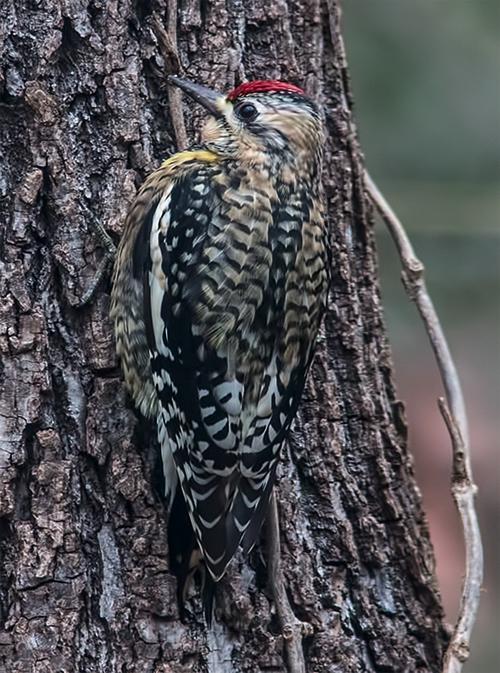
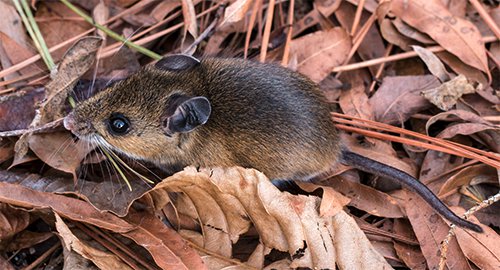

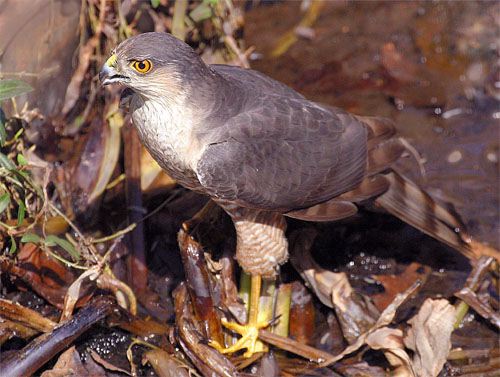
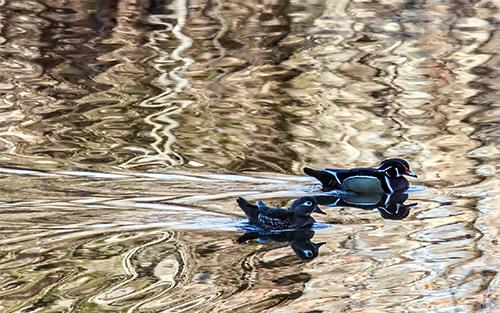

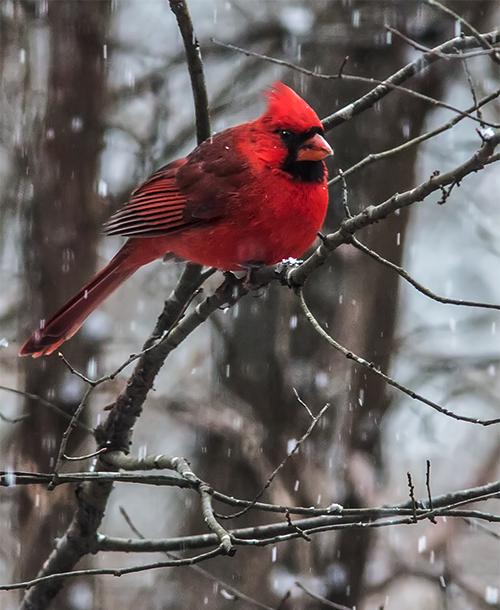
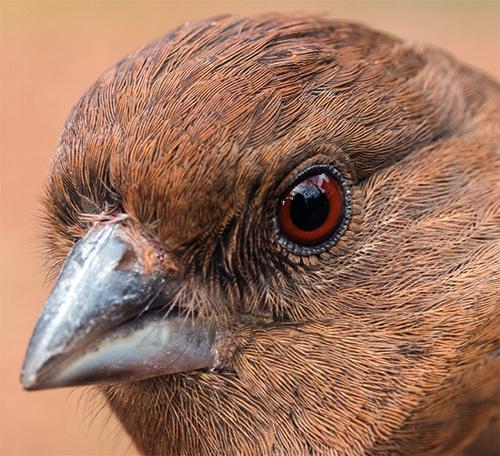
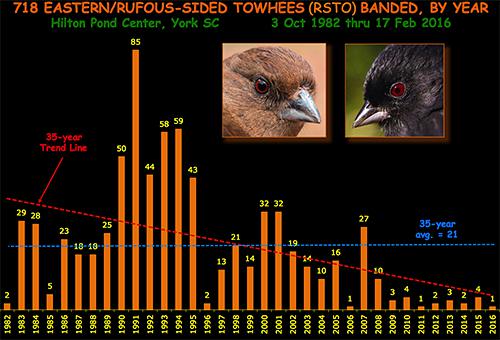
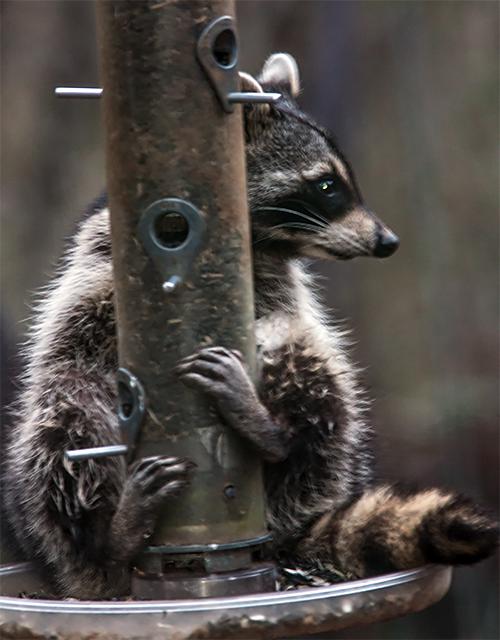
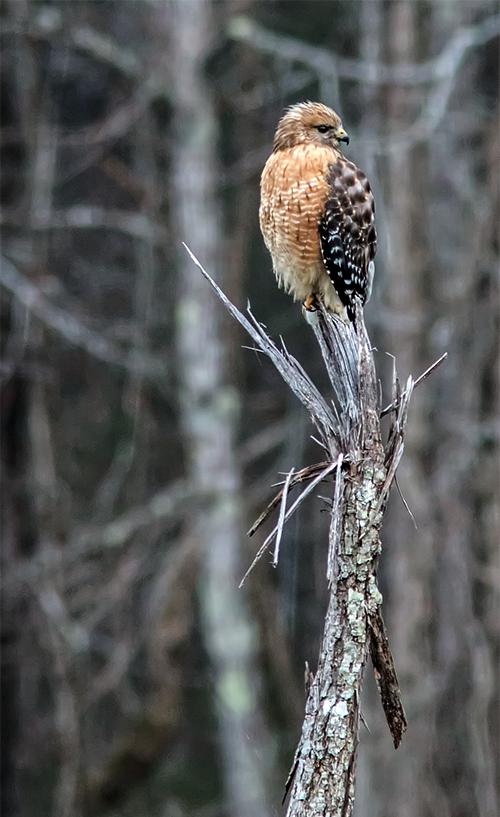
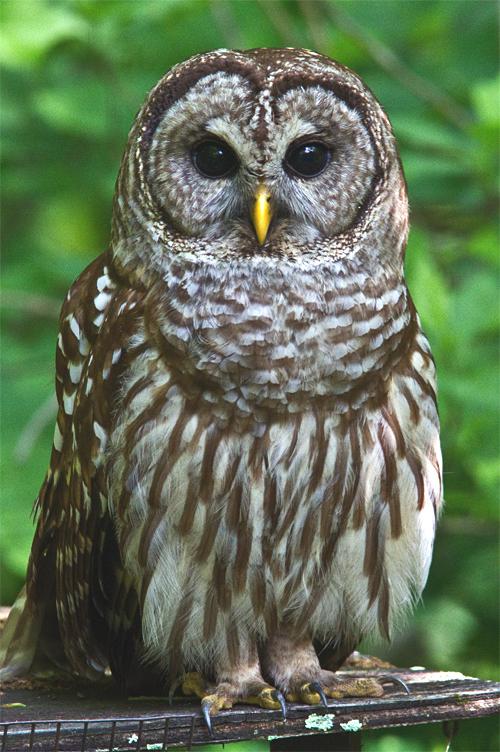
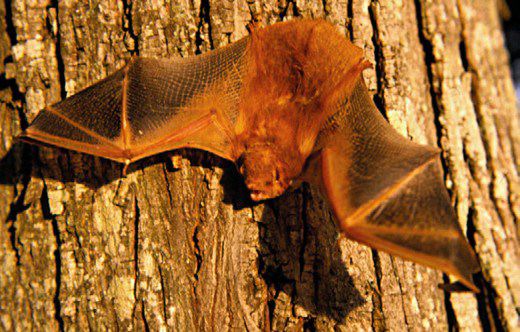








 Oct 15 to Mar 15:
Oct 15 to Mar 15: